Barcelona’s Raval district isn’t just any neighborhood – it’s a tapestry of hidden history, cultural diversity, and social transformation. Established centuries ago, Raval once served as a haven for marginalized communities before becoming an industrial hub. Its vibrant past is etched into the labyrinthine streets, where Gothic architecture, vibrant street art, and eclectic eateries coexist, offering visitors a glimpse into Raval’s storied past and multicultural present. Dive deeper, and you’ll uncover a world that transcends the district’s gritty exterior, revealing a fascinating tale that’s waiting to be explored.
Key Points
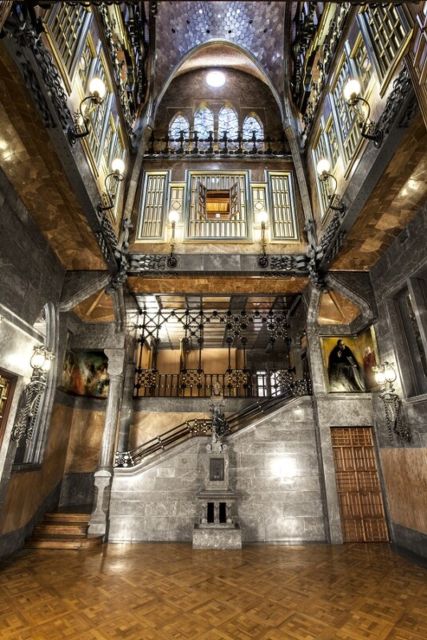
-
The Raval district has a rich history dating back to the 13th century, serving as a hub for marginalized communities outside the city walls.
-
Raval transformed into an industrial center in the 19th century due to the influx of textile workers, and later became a hotbed for anarchist and socialist movements.
-
The district is home to significant architectural landmarks like the Palau Güell, designed by Antoni Gaudí, and the Convent dels Àngels, now a cultural center.
-
Raval celebrates vibrant cultural diversity through rich traditions, including the annual Festes de la Mercè festival and a diverse culinary landscape.
-
The labyrinthine alleyways and narrow streets of Raval offer a sense of discovery, with hidden gems like charming courtyards, intimate art galleries, and family-run eateries.
Exploring the Raval District
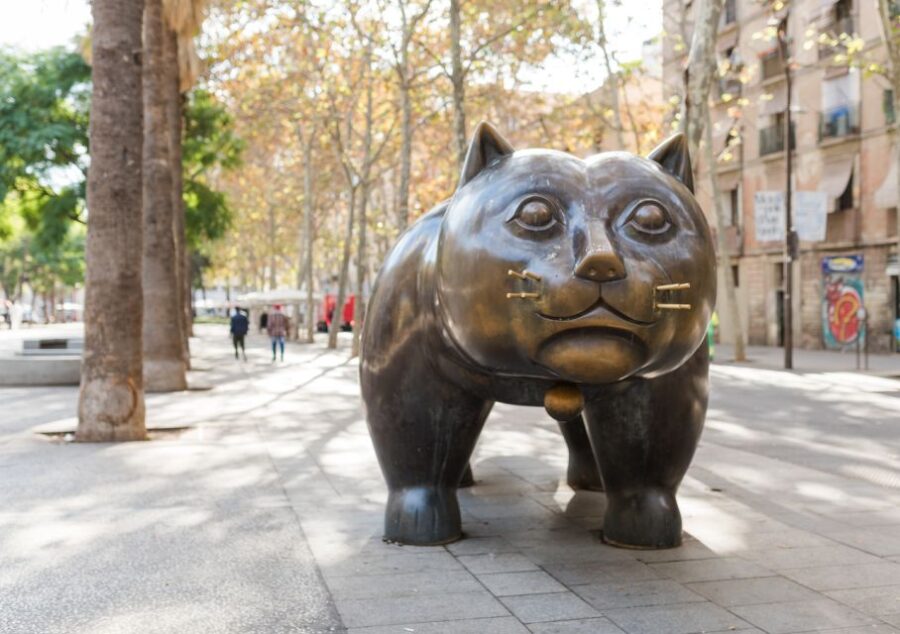
While the guided audio tour showcases Barcelona’s iconic landmarks, visitors can also explore the lively and historic Raval district on their own.
The Raval, located just west of the city center, is known for its vibrant street life, diverse immigrant communities, and rich cultural heritage.
Wandering through its narrow streets, one can discover hidden gems like the Palau Güell, an ornate mansion designed by Antoni Gaudí.
The district’s eclectic mix of shops, galleries, and eateries reflects its multicultural identity.
Visitors can enjoy the lively atmosphere by visiting neighborhood markets, local cafes, and street performers.
Beyond the historic buildings, the Raval also boasts a thriving contemporary art scene, making it a fascinating contrast to the grandeur of Barcelona’s more famous sights.
Fascinated by Barcelona's past? More historical tours we've covered
Historical Significance of Raval
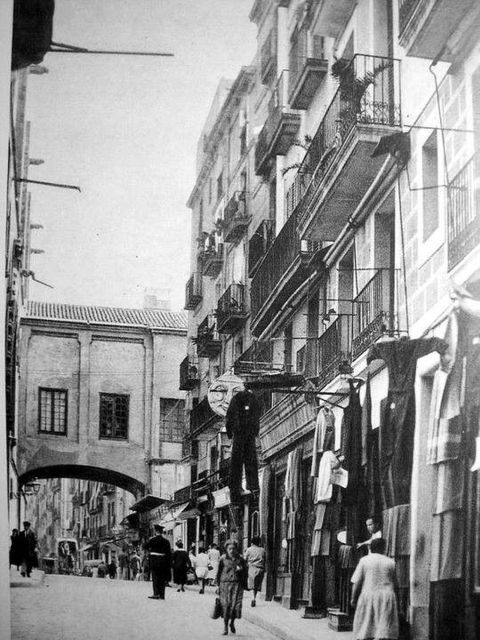
The Raval district has a rich and storied history, dating back to the 13th century when it served as a refuge for marginalized communities outside the city walls of Barcelona. Over the centuries, Raval has been home to a diverse array of inhabitants, from religious outcasts and artisans to revolutionaries and immigrants.
Some key historical highlights include:
-
The hotel of the Sant Pau del Camp monastery in the 11th century, which became a hub for religious dissenters.
-
The influx of textile workers and small businesses in the 19th century, transforming Raval into an industrial center.
-
The rise of anarchist and socialist movements in the late 19th and early 20th centuries, making Raval a hotbed of political activism.
-
The district’s reputation as a haven for counterculture, nightlife, and underground creativity in the latter half of the 20th century.
Architecture and Landmarks
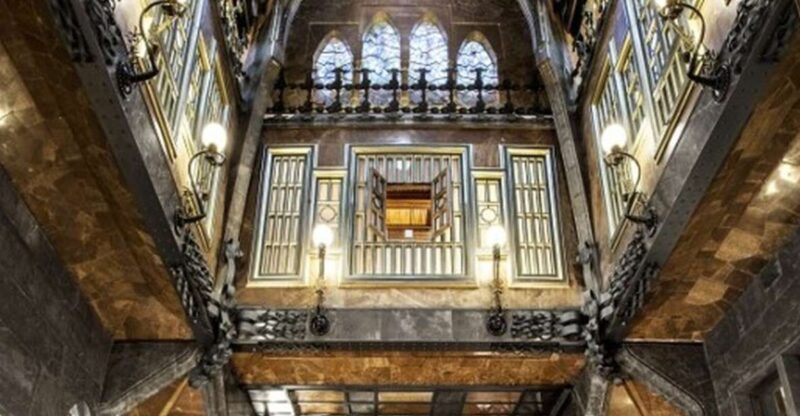
Amidst Raval’s rich history, the district boasts a diverse architectural landscape, showcasing a remarkable blend of styles and eras.
Visitors can admire the Gothic splendor of the Palau Güell, designed by the renowned Antoni Gaudí. The Plaça del Tripi, with its unique mix of modernist and neoclassical buildings, offers a captivating glimpse into the neighborhood’s past.
The iconic Rambla del Raval, a vibrant pedestrian-friendly promenade, is lined with charming cafes and boutiques housed in historic structures. Plus, the district is home to the emblematic Convent dels Àngels, a stunning 14th-century monastery that now serves as a cultural center.
Raval’s architecture reflects its evolution, blending the old and the new to create a truly distinctive urban fabric.
Cultural Diversity and Traditions
Raval’s vibrant cultural diversity is reflected in its rich traditions, which have evolved over centuries and continue to shape the neighborhood’s unique identity. From lively festivals to traditional culinary delights, Raval celebrates its multicultural heritage.
The annual Festes de la Mercè festival showcases Raval’s blend of cultures, with music, dance, and street performances from around the world.
Visitors can indulge in the neighborhood’s diverse cuisine, from authentic tapas at family-run bars to fragrant spices and flavors from the Middle East and Asia.
Religious diversity is also prominent, with historic churches, mosques, and synagogues standing side by side.
Artisanal crafts and workshops, such as traditional ceramic studios, provide a window into Raval’s storied artisanal traditions.
More Great Thing To Do NearbyGastronomy and Local Delights
Visitors to Raval can indulge in a diverse array of local culinary delights, from authentic tapas at family-run bars to fragrant spices and flavors from the Middle East and Asia.
The neighborhood’s thriving food scene reflects its multicultural heritage, with specialty shops and eateries offering a tantalizing glimpse into the region’s gastronomic traditions.
Savor the rich, creamy texture of horchata, a classic Valencian drink made from tiger nuts, or dive into the bold, spicy flavors of North African cuisine.
Whether you’re craving a simple bocadillo (sandwich) or a multi-course feast, Raval’s vibrant food landscape promises to delight the senses and satisfy the palate.
- Montserrat Half-Day Tour With Tapas and Gourmet Wines
- Park Guell & Sagrada Familia Tour With Skip the Line Tickets
- Girona & Costa Brava Small-Group Tour With Pickup From Barcelona
- Montserrat Tour With Gourmet Wine Tasting and Lunch
- Barcelona in 1 Day: Sagrada Familia, Park Guell,Old Town & Pickup
- Barcelona Half Day Bike Small Group Tour
As one ventures deeper into Raval’s labyrinthine alleyways, it becomes clear that navigating the narrow streets requires a keen sense of direction and a willingness to get pleasantly lost. The tangled web of pedestrian-friendly paths winds through a tapestry of architectural styles, inviting explorers to discover hidden gems and serendipitous encounters around every corner.
The navigation experience in Raval offers several unique qualities:
-
Varied streetscapes, from intimate cobblestone lanes to wider boulevards, each with its own character and charm.
-
Unexpected sights and sounds, from the vibrant street art adorning walls to the lively chatter of locals and visitors.
-
A sense of discovery, as one navigates the maze-like layout to uncover tucked-away plazas, cozy cafés, and independent shops.
-
The opportunity to take in the district’s rich history and diverse cultural influences.
Discovering Hidden Gems
Beneath the vibrant surface of Raval’s neighborhoods, a treasure trove of hidden gems awaits the curious explorer. Tucked away from the bustling main streets, one can stumble upon charming courtyards, intimate art galleries, and family-run eateries that offer a glimpse into the district’s authentic character.
From the serene Plaça del Sortidor, a quaint plaza flanked by colorful townhouses, to the Convent dels Àngels, an elegant 15th-century structure now housing a contemporary art museum, these overlooked highlights provide a refreshing respite from the typical tourist trail.
Frequently Asked Questions
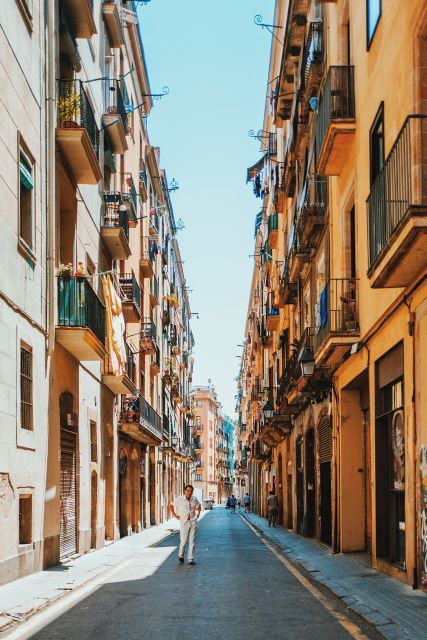
How Long Is the Audio Tour and How Much Time Is Needed?
The Barcelona audio tour doesn’t have a fixed duration. It’s designed for self-paced exploration, with unlimited usage for 30 days after purchase. Visitors can spend as much or as little time as they’d like discovering the city’s highlights.
Are There Any Age Restrictions or Accessibility Options for the Tour?
There are no age restrictions for the tour, and it is accessible for most visitors. The tour can be enjoyed at your own pace, and the audio guide provides accessibility options for those with visual or hearing impairments.
Can the Tour Be Customized or Personalized to Individual Interests?
The tour can be personalized to individual interests. Guests can explore the highlights at their own pace and focus on the areas that most intrigue them, whether that’s modernist architecture, local culture, or culinary delights.
Are There Any Discounts or Package Deals Available for the Barcelona Tour?
The Barcelona audio tour offers occasional discounts and package deals. Customers can check the tour provider’s website or mobile app for any ongoing promotions or bundle options that may provide savings compared to the standard per-person pricing.
How Accurate and Up-To-Date Is the Information Provided in the Audio Tour?
The information provided in the audio tour is generally accurate and up-to-date, as the tour is regularly updated to reflect changes in the city. Customers can expect a reliable and informative experience exploring Barcelona’s highlights at their own pace.
Recap
Raval’s vibrant past and present make it a captivating destination for those seeking to explore Barcelona’s hidden history.
From its architectural gems to its diverse cultural traditions, the district’s labyrinth of streets offers a multifaceted experience that celebrates the city’s evolution.
Visitors can enjoy Raval’s rich heritage, savor its local delights, and uncover the unique charm that has defined this dynamic neighborhood for centuries.
You can check if your dates are available here:More Historical Tours in Barcelona
More Tour Reviews in Barcelona
Not for you? Here's more things to do in Barcelona we have recnetly reviewed
- 4 Best Canoe And Kayak Experiences In Barcelona
- 25 Best Canoe And Kayak Experiences In Barcelona
- 25 Best Dining Experiences In Barcelona
- 15 Best Full-Day Tours In Barcelona
- 3 Best 2 Day Tours In Barcelona
- 14 Best Helicopter Flights And Tours In Barcelona
- 5 Best Jet-Ski Experiences In Barcelona
- 2 Best Coffee Tours And Tastings In Barcelona
- 25 Best Sailing Experiences In Barcelona
- 20 Best Massage And Relaxation Services In Barcelona
- 12 Best Motorbike And Scooter Rentals In Barcelona
- 20 Best Photography Experiences In Barcelona
